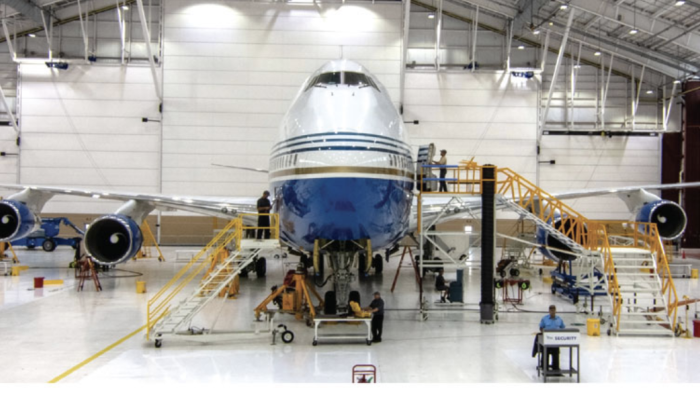The call came in the previous evening, and Textron Aviation’s 1Call product support team leaped into action. A Citation 560 customer had an oil leak that would prevent an upcoming trip, and the mobile service unit (MSU) technicians at the customer’s location needed some O-rings to fix the leak.
At Textron Aviation’s Wichita, Kansas headquarters where the 1Call team makes its home, the parts were quickly put into a box along with some other supplies and parts that this particular MSU needed for restocking its truck. The 1Call team then mobilized a flight crew for the next morning’s aerial response team (ART) flight from Wichita to Springfield, Missouri, where the MSU team is based and where the leaking 560 was located.
This reporter joined the ART flight to witness a 1Call AOG and to see how the system helps Textron Aviation customers stay in the air.
At 8:30 a.m., the parts were ready, the ART Hawker 800XP was fueled and preflighted, and pilots Mark Mohler and Bert Hutchison were on the flight deck starting up the engines. It was a 36-minute flight to Springfield-Branson Airport, where MSU technicians Jonathan King and David Skaggs were standing by. Driving the parts would have taken about five hours.
The job took about an hour for the fix and then another hour for the engine run and paperwork, finishing in plenty of time for the customer’s next flight, and another win for 1Call helping keep the airplane availability at the maximum.
Each MSU truck is loaded with tools and parts and staffed by two technicians, one an A&P mechanic and the other an avionics specialist (but usually also an A&P). Both work on all aspects of the aircraft, and they back each other up by inspecting each others’ work. When they aren’t fixing AOGs, they can also help their nearby operators with supplemental maintenance services, such as phase checks, engine swaps, and other jobs. This saves the owner from having to fly the airplane to a service center. “We have lots of local customers,” said King, “and 12 airplanes that we work on regularly.”
The 1Call teams back up the MSU technicians, helping with troubleshooting problems and expediting parts deliveries. “We lean on them a lot,” he said.
A recent example of another save by King and Skaggs was a flap problem on a customer’s Latitude. It turned out to be a bad current limiter, and they were able to get the part, replace it, and rerig the flaps in time for the jet’s next scheduled flight. “The customer made the departure without disruption,” King said.
Rapid Service
The ART airplanes and the MSU teams demonstrate the benefits of rapid deployment for solving AOGs. It isn’t just a matter of flying parts to where an MSU team is located. Often the location is remote and not served by MSU technicians, so the ART Hawkers can deliver parts and technicians for quick problem resolution.
Textron Aviation now has ART Hawkers based in Wichita, Orlando, Stewart (New York), Mesa (Arizona) and Milwaukee. A Europe-based ART airplane is on the horizon.
To support the more than 19,000 Citation and Hawker jets and Cessna and Beechcraft turboprops in the field, Textron Aviation now has 18 factory-owned service centers, six line maintenance stations, and over 60 MSU trucks. There are 21 global parts locations housing more than $1.5 billion worth of inventory. “We’re moving stock to where it’s needed instead of shipping parts from place to place,” said Kriya Shortt, senior vice president of customer service.
The 1Call organization is just three years old and consists of specialists, organized into teams for each product (for example, Latitude, Hawkers, Excel, etc.). There is also an MSU team that focuses on supporting the MSU teams. The idea behind 1Call was to give customers a single phone number to call to handle any problem, eliminating any run-around where the problem is handed off to multiple people before it gets resolved. “It was born out of an understanding that when the customer is in a moment of critical need, we want to support them,” she said. “Operational availability and dispatch reliability is the goal.”
Modern airplanes such as the G5000-equipped Longitude and Latitude are equipped with a LinxUS fault-isolation system that can communicate aircraft information to Textron Aviation. Customers can access LinxUS information via the Textron Aviation Service App, and LinxUS can send event data directly to the operator via the app. LinxUS is available as an option on other Citation models with G3000 avionics. Most of the other Citation models can deliver aircraft data via Textron Aviation’s Ares recording system.
“There is so much data we can collect and drive improvements back into the product line,” said Travis Tyler, manager 1Call Services. “In the future, there is no call where we will not have real-time health data. We prioritize the assets to meet the customer mission.”







